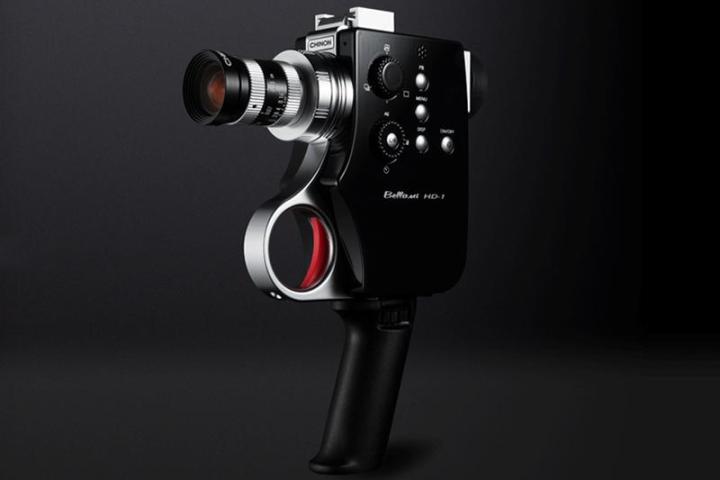
No matter how much technology advances, it seems people will always have a place in their hearts for products from the past. Ideas from the older generation of photography are still alive today – a good example of that is the Bellami HD-1 digital camera, which was inspired by the Super 8 cameras of the mid-to-late 1960s.
With the Bellami HD-1, Japan-based manufacturer Chinon pays homage to Kodak’s Super 8mm camera that was first created in 1965. The HD-1 is a handheld video camera that features a retro die-cast trigger handle and body, a 2.1-megapixel MOS sensor, and the capability of shooting in 10, 15, and 30 frames per second.
It may look like some kind of a laser gun, but as its name implies, the camera shoots full 1080p HD video. Also, the HD-1 can reach shutter speeds of up to 1/1000 per second, and is equipped with a removable grip and a D-mount that allows you to interchange different 8mm lenses, giving you the full Super 8 experience (just without the analog format).

The Bellami HD-1 is currently only available in Japan for around 80,000 yen (approximately $800), but it has the potential to become popular in other parts of the world. People have been interested in Super 8 for a long time, and companies like Nolab have tried to update the Super 8 medium using modern camera technology. Nolab’s attempt revolved around putting a digital sensor in an old film camera, but Chinon’s approach is to go all digital.
Catch a glimpse of the Chinon Super 8 Bellami HD-1 in the short video below.
(Via DesignBoom)
Editors' Recommendations
- Insta360 cameras take a speedy ride around Monaco’s F1 track
- The OnePlus 8T revives the monochrome phone camera, and it’s really good
- Sony’s ZV-1 is an influencer-targeted upgrade to the best compact camera
- Inspired by the old-school Super 8, this $78 video camera captures GIFs
- QooCam, the first pocketable 8K 360 camera, is hiding some big features

